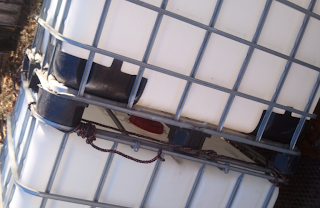I have used this is the type of filter for many years without problems.
The 2" inlet also serves as a waste drain.
A tee with either a diverter valve or two separate valves allows switching from normal operating to backwash mode.
---
This page continues to get a lot of Google hits, so I have added this drawing to demonstrate how the bio-filter in my pond was built.
The gravel media is suspended above an open space. I did this by building a cement block cistern on top of a 6" concrete slab. The blocks were laid dry and then filled with concrete. Inside I laid 1-1/2"x8"x16" paver bricks on edge to create a shelf for the PVC tubes to rest on.
The PVC tubes are 1" pipe and contain a piece of 5/8" rebar to give them the strength to support the gravel. The ends are capped to prevent the rebar from rusting. Yes it takes a lot of these pipes laid side by side. Over the top of these PVC tubes I placed a piece of PVC fencing material to further support the gravel.
There is a drain and an inlet pipe placed at the bottom. Both are mortared in place as is the outlet near the top. Then to prevent leaks I coated the entire inside surface with Thoroseal .
I have also built small filters inside of plastic olive barrels as depicted in the drawing at the top of this page. The gravel is supported by a PVC cage. I'll let you use your imagination rather than attempt to draw that.
---
Another idea I have is to plumb the spill tube down to the bottom and bring the inlet to the top. Dirty water is filtered down through the gravel. A mesh on top of the gravel would facilitate cleaning
This would facilitate cleaning. A mesh could be laid on top of the gravel and periodically rinsed off
SketchUp Link












